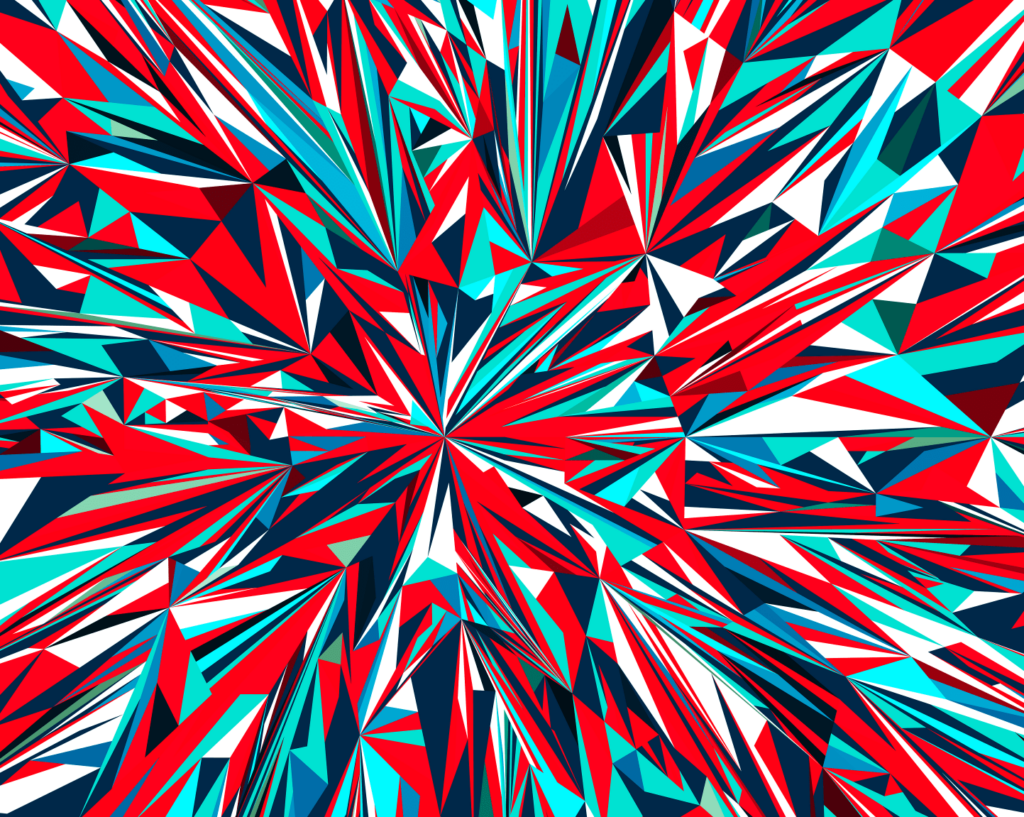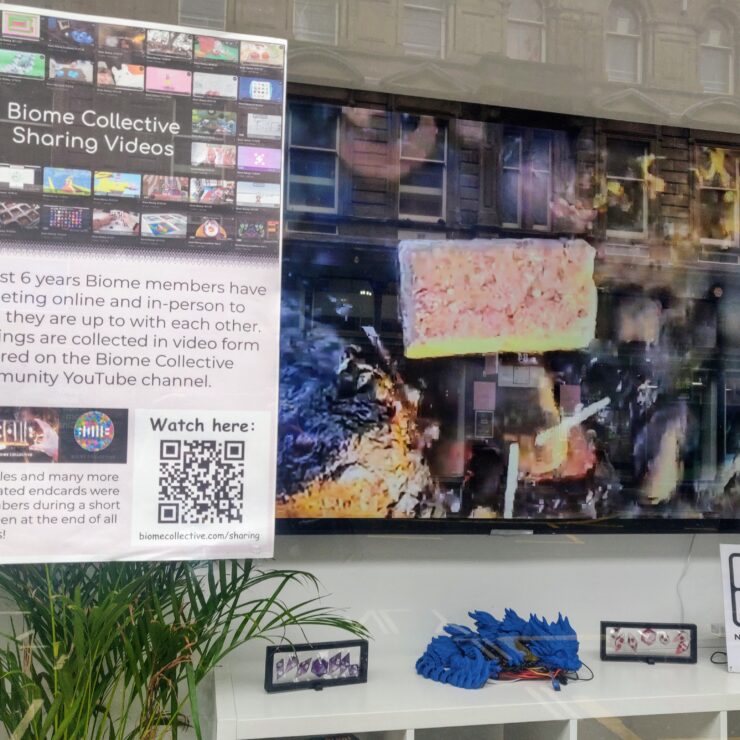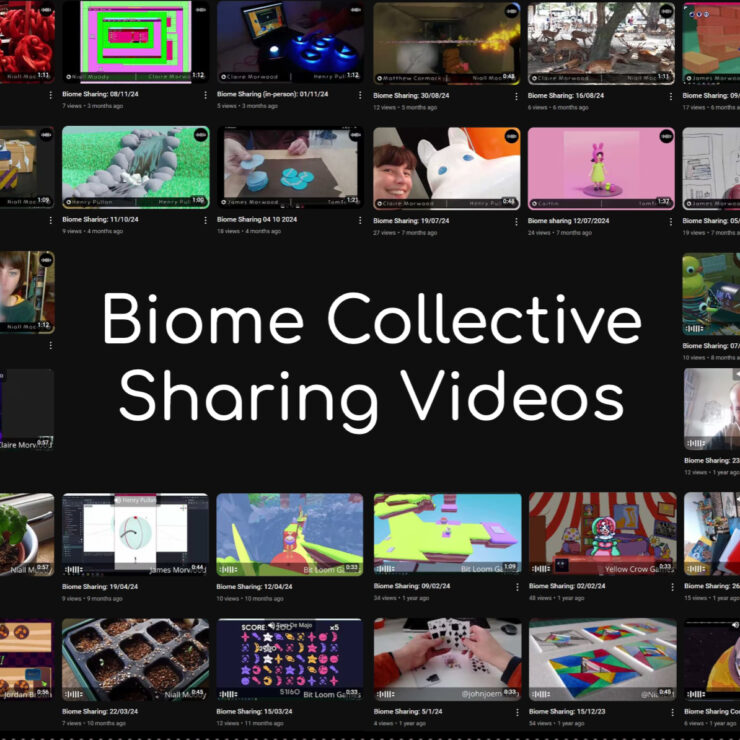UCracking – generative art from Marius Watz

Marius Watz is a Norwegian artist and curator who works in the field of generative art. He will be exhibiting as part of the Weave by Abertay group show in the Wellgate centre for this year’s NEoN digital arts festival. He will also be exhibiting work in the café of the Dundee Science Centre as part of the Dundee Science Festival from 20 October, when there will be an interactive workshop inspired by his work.
NEoN’s digital communications officer Ana Hine spoke to him about his career up to this point and UCracking – the series of work he will be showing during both festivals.
Ana: What attracted you to generative art and how would you describe it to someone who’s never heard of it before?
Marius: Generative art is the creation of form (whether its a visual composition, a 3D structure or sound) through the definition of a system that contains all the rules and inputs needed to produce the final result. This means encoding all aesthetic decisions and logic of composition into a semi-autonomous process, making it possible to experiment with the range of possibilities contained within that system, while also placing the artist at a remove from the final work.
I took up working in this fashion because I was always interested in systems from nature and architecture, but also because it mirrored the act of programming, which had been a big interest of mine since I was about 11-years-old.
How does the experience of your work differ in a gallery setting as opposed to being viewed online?
I don’t actually show much work online these days, but when I was starting out in the late 1990’s the web was an invaluable platform for all kinds of digital art. The main benefit to publishing online was access and cost – most people could hack together a simple web site practically for free, and potentially still reach an audience that was both global and niche. But the real potential of showing online was realized by the net art movement, which exploited the strangeness of online interactions and net culture to produce some truly novel cultural spaces.
For me, physical presence has become a major factor in how I show my work. Digital experiences rely on mediation, and screens can easily feel unsatisfactory as a way of viewing the work. I’d prefer not to show my work as images on a wall – I want the image to BE the wall. I also work with digital fabrication (3D printers, laser cutters etc) as an extension of my software processes, making the work tangible and incorporating physical imperfections as a final part of the process.
You mentioned in a previous interview that you started designing posters and graphics as part of the Oslo techno scene in the 90s. Could you tell us a bit more about that?
When I was still studying Computer Science in 1993, I was lucky to meet Halvor Bodin, a designer who has been influential in shaping the current state of contemporary Norwegian graphic design. He was creating posters for a series of rave events in Oslo, and I showed him some very early (and naive) 3D visuals I had generated with custom software.
The techno-utopian look suited the rave scene well, and we started a collaboration that lasted for years and became my first introduction to applying computational logic to creative expression. It was a turning point for me, I found the idea of coding visuals endlessly more exciting than “proper” Computer Science. Soon after, I abandoned those studies and to this day I have no formal degree in art, design or programming.
You use a lot of bright and bold colours in your work. Do you have a favourite colour or colour palate?
I’m inspired by utopian movements like Op Art and De Stijl, and prefer colours that emphasize geometric contrast over realism. My colour palettes are always generated semi-randomly, but clearly I do have some favourites (cyan, orange, pink…)
In general I rely on a classic principle of composition: Contrast between elements is more interesting than uniform distributions. Often, I’m aiming to create a visual clash so that the image takes on a kinetic quality in the eye of the viewer, or I’m hinting that an image can be read both as a 2D “flat” surface or as a rendering of a 3D structure.
What can you tell us about your piece UCracking?
Like most of my work, UCracking starts with a simple compositional gesture. Where other pieces focus on how a form is constructed or how animated behaviour might result in a composition, UCracking transforms a geometry built up of triangles into a fractal mess through a process called subdivision.
For each iteration, the existing triangles are “cracked” into a new set of triangles according to a range of geometric operations. These again are coloured randomly and cracked further, with recursive iteration rapidly producing a daunting complexity.
In this, Scotland’s Year of the Young People, what advice would you give to a teenager who’s interested in creating generative art?
I would recommend taking a look at p5.js, which is a JavaScript update to the excellent Processing coding tool for artists and designers. First released in 2001, Processing was one of the first creative coding tools to reach a mass audience of non-coders, and it remains an excellent way to get introduced to thinking visually with code.
And finally, what are you looking forward to about NEoN 2018?
I’m looking forward to my first visit to Scotland! But really, I always look forward to meeting the people involved and seeing the work on display.
The Weave exhibition Lifespans: Forever And Ever takes place at Units 9-11, Level 3, of the Wellgate Shopping Centre from Tuesday 6th of November until Sunday 18th of November.


